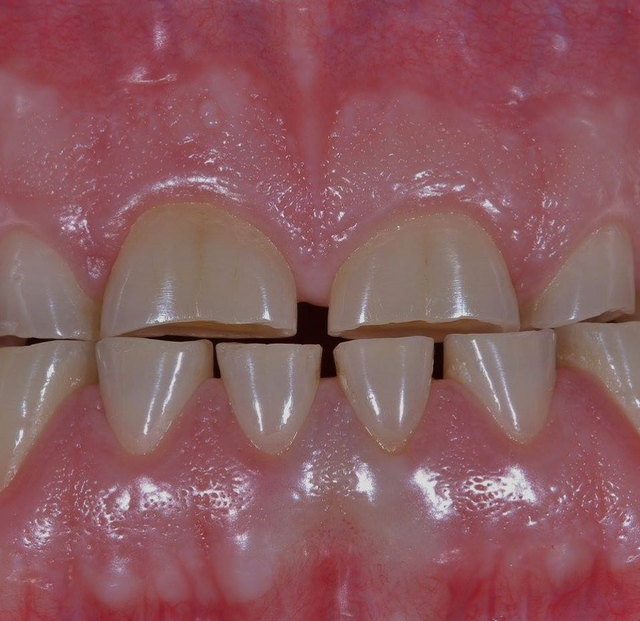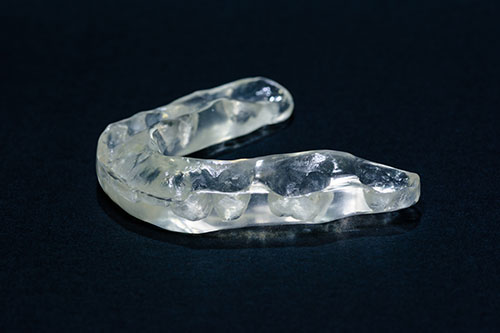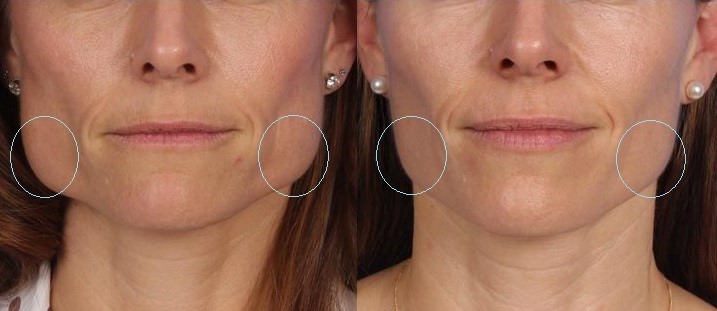Symptoms, Causes and Cures for Bruxism
Monday January 20, 2020
What is Bruxism?
Bruxism is an oral parafunctional activity that is described as abnormal clenching or grinding of teeth. Basically, bruxism is grinding or clenching your teeth too hard. It is not related to normal chewing or talking.
Bruxism can occur when a patient is asleep, awake, or at both times.
Two main types of bruxism: Grinding and Clenching
Grinding
Grinding occurs when a patient puts pressure on their teeth while moving them side to side. These patients can grind their teeth to a point where they become sensitive, esthetically unacceptable, and even not efficient for chewing function. These patients wear both their front and back teeth down during grinding.
Clenching
Clenching occurs when a patient places excessive force on their back teeth. This causes extensive wear to the posterior (back) teeth and subsequently, problems with the patient’s bite. These patients can display flat posterior teeth. This is called a “bite collapse,” due to excessive force.
SYMPTOMS OF BRUXISM?
- Jaw muscle irritation, tenderness and/or pain
- Head Aches, Migraines
- Increased tooth wear
- Waking with sore jaw muscles or head aches
- Tooth wear on tops of teeth ( attrition ) or wear on sides of teeth (abfractions)

In addition to the obvious wear to teeth, restorations (fillings and crowns) are worn down significantly faster in “bruxers,” leading to early replacement of restorations. Teeth can fracture which can lead to the need for restorations such as fillings or crowns. A root canal and even an extraction of a tooth can be necessary. In some patients, full mouth rehabilitation is necessary when teeth are severely worn.
Headaches and Bruxism?
Normal chewing has approximately 20-40 pounds of pressure and most of the time teeth do not touch during chewing. Sleep Bruxers can place up to 250 pounds of force for 40 minutes per hour. This pressure can lead to the symptoms described previously, like tooth fractures, and headaches.
Causes for Bruxism?
- Stress: Bruxism can be caused by situational anxiety, times of increased concentration, or periods of increased stress.
- Crooked Teeth: Misaligned or crowded teeth can lead to bruxism. This is due to poor distribution of force along a patients arch.
- Missing Teeth: Missing teeth can lead to bruxism. This is due to the uneven distribution of bite forces due to the missing teeth. Missing teeth can also lead to arch collapse due to increased force on remaining teeth causing them to become more crowded.
Bruxism can be treated in various ways.
Night Guard
The most common way to treat bruxism is a night guard (occlusal splint) to control the habit during sleep.
A night guard is something you wear between your top and bottom teeth at night to protect from Bruxism. There are various types of night guards. At Fort Worth Dental Arts, we use two types of night guards. Upper night guards and lower night guards. Dr. Hoyt prescribes the type of night guard based on each patients individual needs and preferences.
Night guards have hard and soft components to them to increase comfort.

At Fort Worth Dental Arts our night guards are made with high quality medical grade acrylic. However we price our night guards more affordably to increase access to these medical devices for our patients.
ORTHODONTIC TREATMENT
If a patient’s teeth are misaligned, or bite is in a poor position, this can lead to increased bruxism. Correcting tooth alignment (arch) and position can redistribute bite ( occlusal ) forces, and decrease bruxism. At Fort Worth Dental Arts we utilize two methods for teeth alignment, short term orthodontics ( six month smiles ) and Invisalign.
BOTOX
Botox has many clinical applications.
Botox has long been used as adjunct therapy for TMJ pain and head ache treatment.
The primary muscles for closing the jaw are the master muscles on the side of the head. By injecting a small amount of Botox into these muscles it causes them to relax; which weakens the muscles enough too stop involuntary grinding and clenching of the jaw.
The result is reduced destruction on teeth due to over active jaw muscles. Head aches from over active jaw muscles are eliminated. Botox also can also soften the appearance of the jaw line.
Though Botox is not a cure for Bruxism, it can control the symptoms more effectively then a night guard for some patients. More severe cases must utilize both a night guard and Botox treatment. Botox as a treatment for Bruxism must be used every 3-4 months.

Ready to get started?

Dr. Spencer Hoyt obtained his Doctor of Dental Surgery degree and followed his Residency/ Advanced Education in General Dentistry from the world-renowned University of the Pacific School of Dentistry in San Francisco, CA. He established Fort Worth Dental Arts in 2011 to see dentistry done differently as he was passionate about providing quality dental care to his community.
Dr. Hoyt is an active member of the American Dental Association, Texas Dental Association, American Academy of Cosmetic Dentistry, CEREC Doctors, and Spear Education. He was voted Best Dentist' 2019, 2020, 2021 by Fort Worth Weekly.